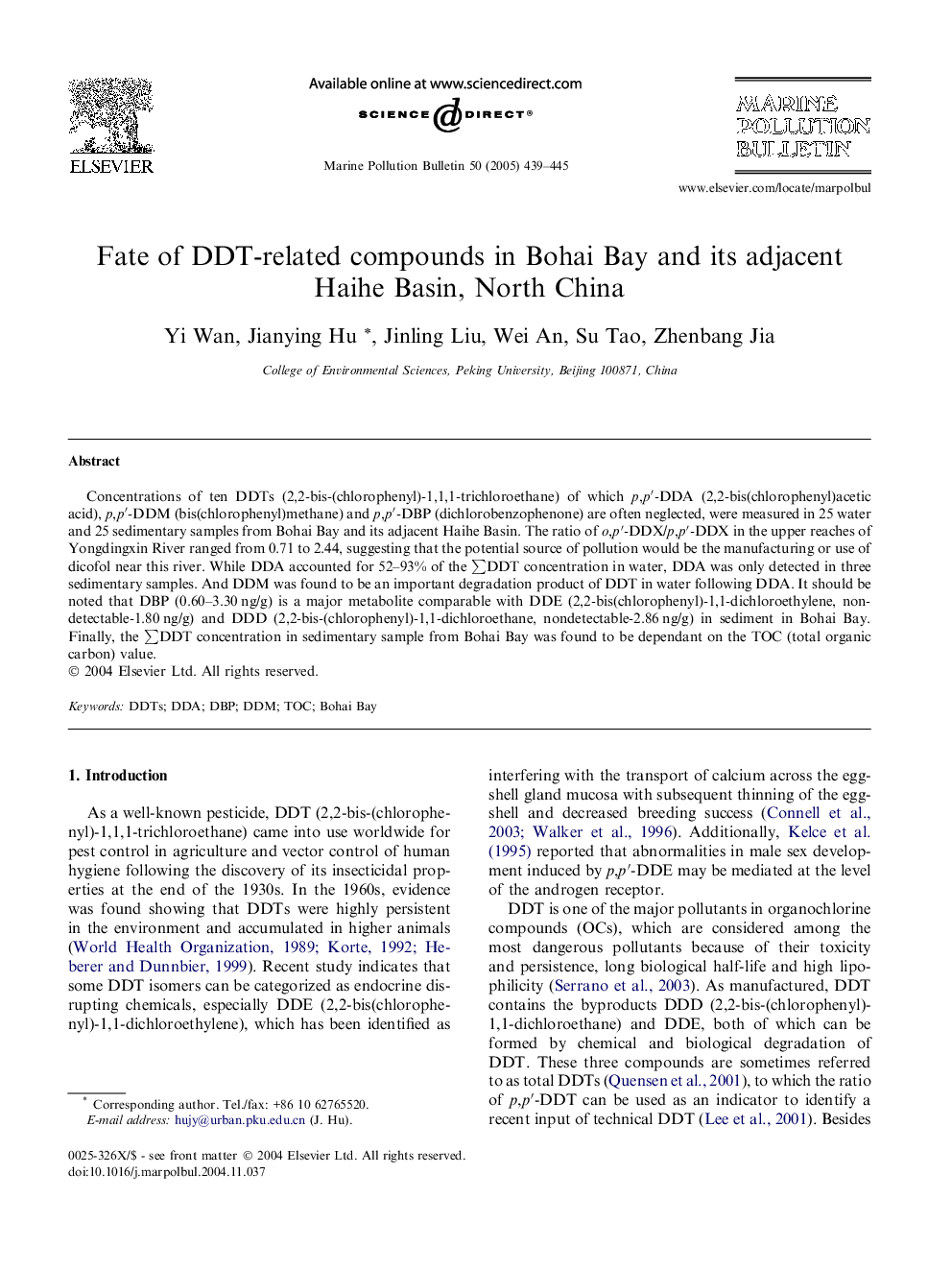| Article ID | Journal | Published Year | Pages | File Type |
|---|---|---|---|---|
| 9466247 | Marine Pollution Bulletin | 2005 | 7 Pages |
Abstract
Concentrations of ten DDTs (2,2-bis-(chlorophenyl)-1,1,1-trichloroethane) of which p,pâ²-DDA (2,2-bis(chlorophenyl)acetic acid), p,pâ²-DDM (bis(chlorophenyl)methane) and p,pâ²-DBP (dichlorobenzophenone) are often neglected, were measured in 25 water and 25 sedimentary samples from Bohai Bay and its adjacent Haihe Basin. The ratio of o,pâ²-DDX/p,pâ²-DDX in the upper reaches of Yongdingxin River ranged from 0.71 to 2.44, suggesting that the potential source of pollution would be the manufacturing or use of dicofol near this river. While DDA accounted for 52-93% of the âDDT concentration in water, DDA was only detected in three sedimentary samples. And DDM was found to be an important degradation product of DDT in water following DDA. It should be noted that DBP (0.60-3.30Â ng/g) is a major metabolite comparable with DDE (2,2-bis(chlorophenyl)-1,1-dichloroethylene, nondetectable-1.80Â ng/g) and DDD (2,2-bis-(chlorophenyl)-1,1-dichloroethane, nondetectable-2.86Â ng/g) in sediment in Bohai Bay. Finally, the âDDT concentration in sedimentary sample from Bohai Bay was found to be dependant on the TOC (total organic carbon) value.
Related Topics
Physical Sciences and Engineering
Earth and Planetary Sciences
Oceanography
Authors
Yi Wan, Jianying Hu, Jinling Liu, Wei An, Su Tao, Zhenbang Jia,
